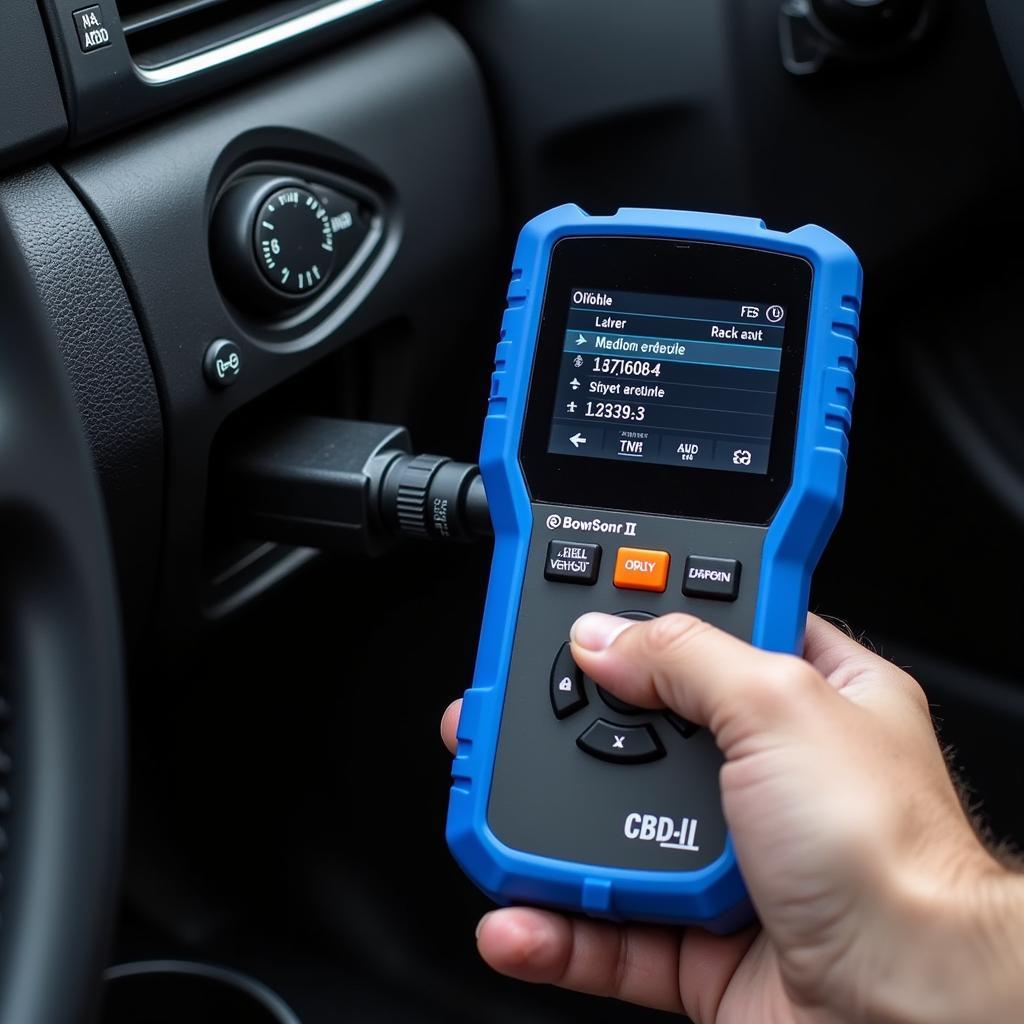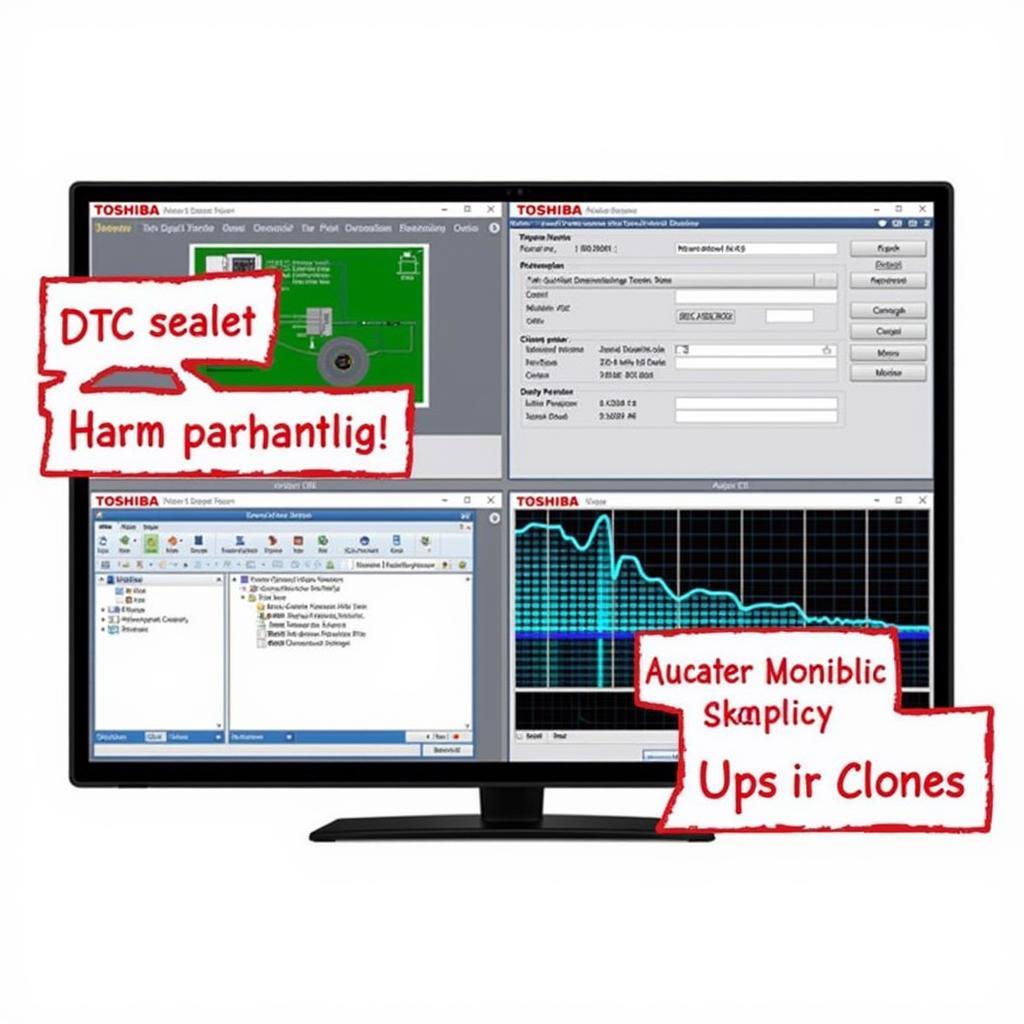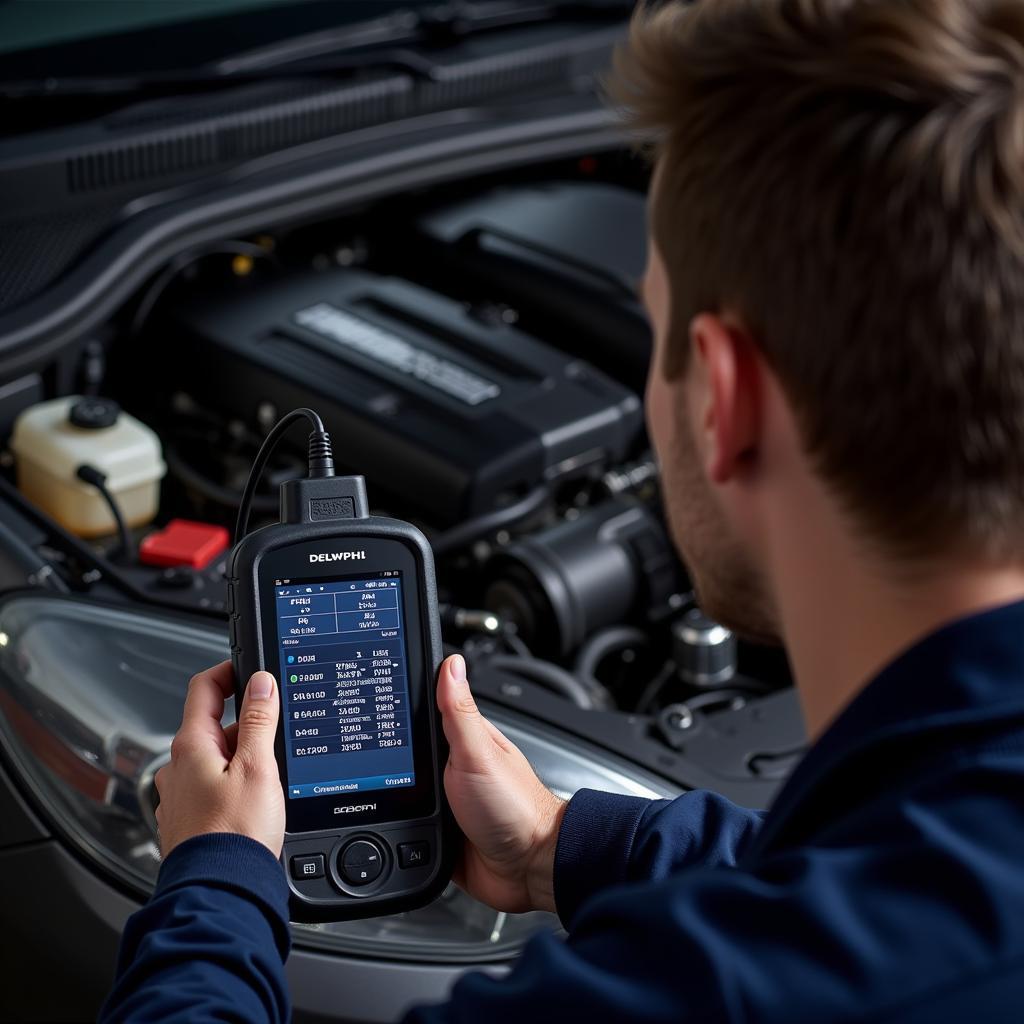A “Diagnostic Vehicle Tool” has become essential for modern car maintenance and repair. This tool allows mechanics and car enthusiasts to delve into the vehicle’s computer system, read error codes, and pinpoint issues with precision.
Understanding the Importance of a Diagnostic Vehicle Tool
Gone are the days of relying solely on mechanical expertise and intuition to diagnose car problems. Today’s vehicles are equipped with sophisticated onboard computers that monitor and control various systems. When a problem arises, the computer stores a Diagnostic Trouble Code (DTC) in its memory. A diagnostic vehicle tool acts as the bridge between this complex system and the user, translating these codes into understandable information.
 Car Diagnostic Tool Connected
Car Diagnostic Tool Connected
Types of Diagnostic Vehicle Tools
There’s a wide range of diagnostic vehicle tools available, catering to different needs and budgets:
- Basic Code Readers: These affordable and user-friendly tools can read and clear basic DTCs related to the engine and emissions systems. Ideal for car owners who want to perform simple diagnostics and troubleshooting.
- Advanced Scan Tools: Offering a broader range of functions, these tools can access multiple vehicle systems, including transmission, ABS, airbags, and more. They can display live data streams, perform actuator tests, and even program certain modules. Mechanics and experienced DIYers often prefer these comprehensive tools.
- Manufacturer-Specific Tools: Designed for specific car brands, these tools provide in-depth access to all vehicle systems, including proprietary protocols. They offer advanced programming capabilities and are typically used by dealerships and specialized repair shops.
 Mechanic Using Scan Tool in Workshop
Mechanic Using Scan Tool in Workshop
Choosing the Right Diagnostic Vehicle Tool
Selecting the appropriate diagnostic vehicle tool depends on your specific needs and level of expertise. Consider the following factors:
- Vehicle Compatibility: Ensure the tool supports the make, model, and year of your vehicle or the vehicles you work on.
- Features: Determine the necessary features based on your diagnostic needs. Do you need basic code reading, live data streaming, or advanced programming capabilities?
- User Interface: Opt for a tool with a user-friendly interface and intuitive software that suits your technical skills.
- Budget: Diagnostic vehicle tools range significantly in price. Set a budget beforehand and explore options within that range.
Benefits of Using a Diagnostic Vehicle Tool
Investing in a quality diagnostic vehicle tool offers numerous benefits:
- Accurate Diagnostics: Quickly and accurately pinpoint the root cause of car problems, saving time and unnecessary repairs.
- Cost Savings: Avoid costly guesswork by identifying the exact components requiring attention.
- Preventive Maintenance: Monitor vehicle health and identify potential issues before they escalate into major problems.
- Increased Knowledge: Gain a deeper understanding of your vehicle’s systems and how they operate.
- Enhanced Resale Value: Maintaining a comprehensive vehicle history with diagnostic reports can increase resale value.
Common Uses of a Diagnostic Vehicle Tool
Diagnostic vehicle tools have become indispensable for a wide range of tasks:
- Reading and Clearing DTCs: Identify and clear error codes stored in the vehicle’s computer system.
- Viewing Live Data: Monitor real-time sensor data, such as engine RPM, coolant temperature, and oxygen sensor readings, to diagnose issues effectively.
- Performing Actuator Tests: Activate specific components, such as solenoids, relays, and motors, to verify their functionality.
- Programming Modules: Program new modules or update existing ones with the latest software.
- Resetting Service Lights: Reset service reminders and warning lights after performing maintenance.
Tips for Using a Diagnostic Vehicle Tool
While user-friendly, maximizing the benefits of a diagnostic vehicle tool requires some understanding:
- Consult the Vehicle’s Service Manual: Always refer to the manufacturer’s service manual for specific DTC interpretations and repair procedures.
- Start with Basic Checks: Before diving into diagnostics, ensure the battery is fully charged and there are no loose connections.
- Update the Tool’s Software: Regularly update the tool’s software to access the latest features and vehicle definitions.
- Seek Professional Help: If you encounter complex issues or are unsure about any procedure, consult a qualified mechanic.
Conclusion
A diagnostic vehicle tool has become an indispensable tool for anyone involved in car maintenance and repair. Its ability to unlock the secrets of a vehicle’s computer system empowers car owners, mechanics, and DIY enthusiasts alike to diagnose and resolve issues efficiently and effectively. Investing in the right tool can save you time, money, and frustration in the long run, keeping your vehicle running smoothly for years to come.
If you’re in need of top-quality diagnostic vehicle tools, be sure to check out the options available at ScanToolUS. Our team of experts can help you find the perfect tool to meet your needs. Contact us today at +1 (641) 206-8880 or visit our office at 1615 S Laramie Ave, Cicero, IL 60804, USA.


